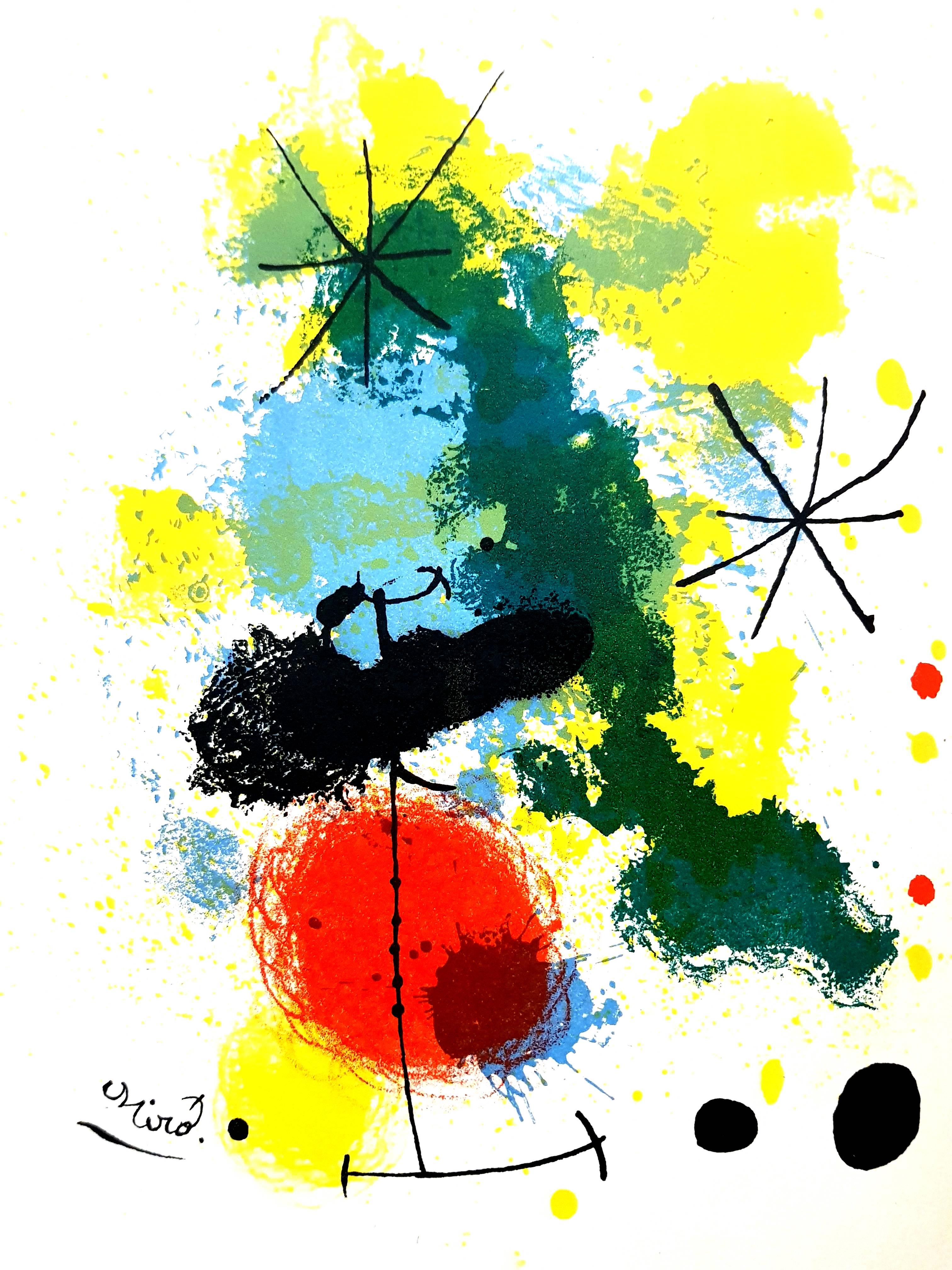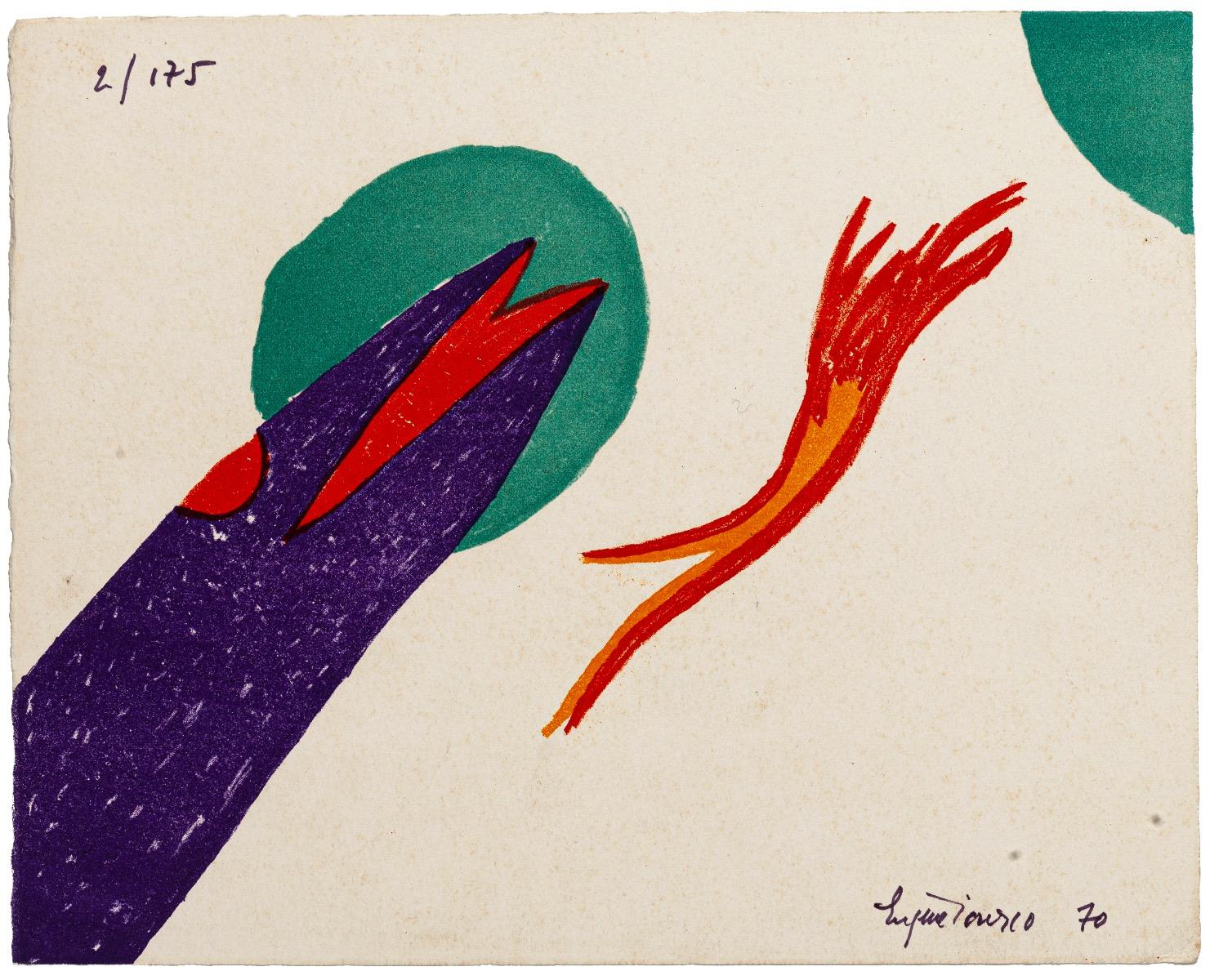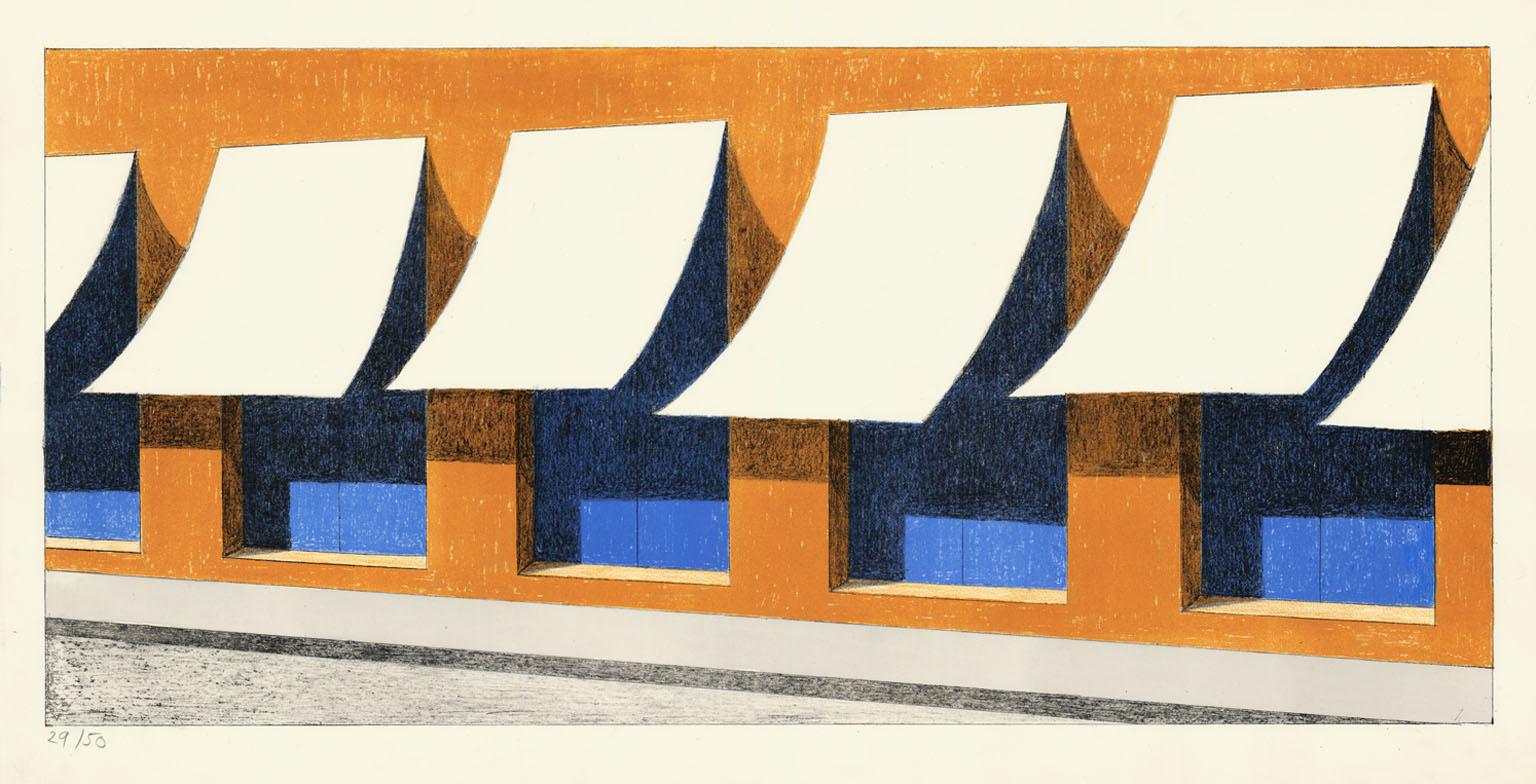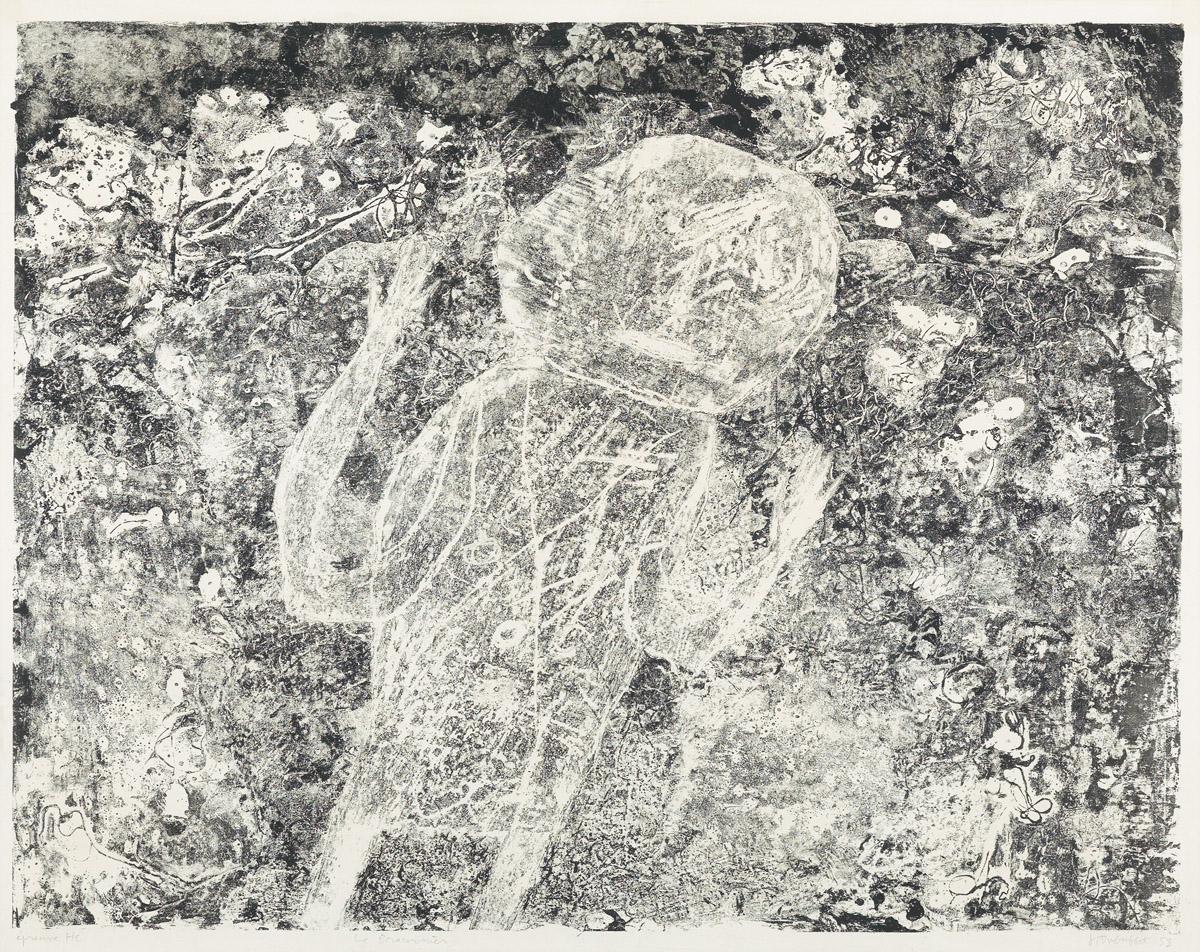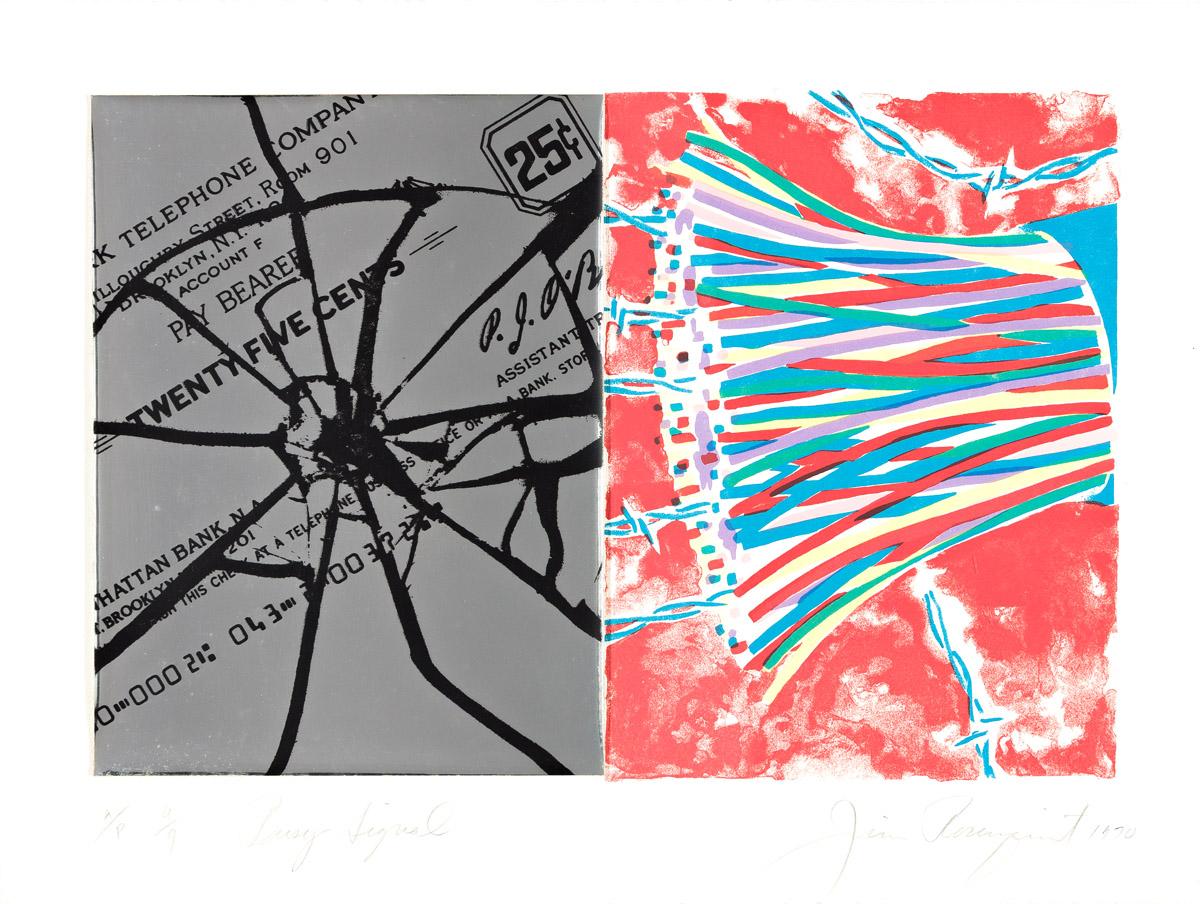Marc ChagallMarc Chagall - Cover - Original Lithograph 1964
1964
About the Item
- Creator:Marc Chagall (1887 - 1985, French)
- Creation Year:1964
- Dimensions:Height: 11.82 in (30 cm)Width: 7.88 in (20 cm)Depth: 0.04 in (1 mm)
- Medium:
- Movement & Style:
- Period:
- Condition:
- Gallery Location:Collonge Bellerive, Geneve, CH
- Reference Number:1stDibs: LU16122646351
Marc Chagall
Described by art critic Robert Hughes as "the quintessential Jewish artist of the twentieth century," the Russian-French modernist Marc Chagall worked in nearly every artistic medium. Influenced by Symbolism, Fauvism, Cubism and Surrealism, he developed his own distinctive style, combining avant-garde techniques and motifs with elements drawn from Eastern European Jewish folk art.
Born Moishe Segal in 1887, in Belarus (then part of the Russian empire), Chagall is often celebrated for his figurative paintings, but he also produced stained-glass windows for the cathedrals of Reims and Metz, in France; for the United Nations, in New York; and for the Hadassah Hospital in Jerusalem, as well as book illustrations, stage sets, ceramics, tapestries and fine-art prints. Characterized by a bold color palette and whimsical imagery, his works are often narrative, depicting small-village scenes and quotidian moments of peasant life, as in his late painting The Flight into Egypt from 1980.
Before World War I, Chagall traveled between St. Petersburg, Paris and Berlin. When the conflict broke out, he returned to Soviet-occupied Belarus, where he founded the Vitebsk Arts College before leaving again for Paris in 1922. He fled to the United States during World War II but in 1947 returned to France, where he spent the rest of his life. His peripatetic career left its mark on his style, which was distinctly international, incorporating elements from each of the cultures he experienced.
Marc Chagall remains one of the past century’s most respected talents — find his art on 1stDibs.
- ShippingRetrieving quote...Ships From: Collonge Bellerive, Geneve, Switzerland
- Return PolicyA return for this item may be initiated within 7 days of delivery.
- Joan Miro - Original Lithograph - Frontispiece for "Prints from Mourlot Press"By Joan MiróLocated in Collonge Bellerive, Geneve, CHJoan Miro - 1964 Dimensions: 30 x 20 cm Edition of 200 (one of the 200 on Vélin de Rives) reserved for collaborators, there was also a larger edition of 2000 From "Prints from the Mo...Category
1960s Modern Abstract Prints
MaterialsLithograph
- Pablo Picasso - Painter and His Model - Original LithographBy Pablo PicassoLocated in Collonge Bellerive, Geneve, CHPablo Picasso - Painter and His Model - Original Lithograph 1964 Dimensions: 30 x 20 cm Edition of 200 (one of the 200 on Vélin de Rives) Mourlot Press, 1964 Unsigned and unumbered ...Category
1960s Modern Abstract Prints
MaterialsLithograph
- André Beaudin - Composition - LithographBy Andre BeaudinLocated in Collonge Bellerive, Geneve, CHAndré Beaudin - Composition - Original Lithograph 1964 Dimensions: 30 x 20 cm Edition of 200 (one of the 200 on Vélin de Rives) Mourlot Press, 1964 Unsigned and unumbered as issuedCategory
1960s Modern Abstract Prints
MaterialsLithograph
- Jean Cocteau - Morlot - Original LithographBy Jean CocteauLocated in Collonge Bellerive, Geneve, CHJean Cocteau - Morlot - Original Lithograph 1964 Dimensions: 30 x 20 cm Edition of 200 (one of the 200 on Vélin de Rives) Mourlot Press, 1964 Jean Cocteau Writer, artist and film ...Category
1960s Modern Abstract Prints
MaterialsLithograph
- Maurice Estève - Composition - Original LithographBy Maurice EstèveLocated in Collonge Bellerive, Geneve, CHMaurice Estève - Composition - Original Lithograph 1964 Dimensions: 30 x 20 cm Edition of 200 (one of the 200 on Vélin de Rives) Mourlot Press, 1964Category
1960s Modern Abstract Prints
MaterialsLithograph
- Alfred Manessier - Abstract Blue Composition - Original LithographBy Alfred ManessierLocated in Collonge Bellerive, Geneve, CHAlfred Manessier - Abstract Blue Composition - Original Lithograph 1964 Dimensions: 30 x 20 cm Edition of 200 (one of the 200 on Vélin de Rives) Mourl...Category
1960s Modern Abstract Prints
MaterialsLithograph
- Composition - Lithograph by Eugène Ionesco - 1970Located in Roma, ITComposition is an lithography artwork realized by Eugène Ionesco ( 1909-1994). In very good condition. Sheet dimension: 22.5 x 28 cm. The artwork rep...Category
1970s Modern Abstract Prints
MaterialsLithograph
- Poster for PeaceBy Robert RauschenbergLocated in New York, NYA very good impression of this color offset lithograph with strong colors. Signed, dated and numbered 230/250 in pencil by Rauschenberg. Published by S...Category
1970s Modern Abstract Prints
MaterialsColor, Lithograph, Offset
- Sol de MediodiaBy Emilio SanchezLocated in New York, NYEmilio Sanchez (1921-1999) created this color lithograph entitled “SOL de MEDIODIA” in 1996-98. This unsigned impression came to us directly from the Sanchez estate. Estate stamped on verso. The printed image size is 15 x 32 inches and the paper size 18 x 34.13 inches. Printed in an edition of 50 this impression is inscribed “28/50” - lower left. Stamped on verso "Estate of Emilio Sanchez." “Best known for his architectural paintings and lithographs, Emilio Sanchez (1921-1999) explored the effects of light and shadow to emphasize the abstract geometry of his subjects. His artwork encompasses his Cuban heritage...Category
Late 20th Century Modern More Prints
MaterialsLithograph
- Le BraconnierBy Jean DubuffetLocated in New York, NYA very good impression of this extremely scarce lithograph on Arches. An hors commerce impression, aside from the edition of 25. Signed, titled, dated and inscribed "épreuve HC" in p...Category
1950s Modern Abstract Prints
MaterialsLithograph
- Busy SignalBy James RosenquistLocated in New York, NYA very good impression of this color lithograph with collage of screenprinted reflective Mylar on Arches. One of 9 numbered artist's proofs, aside from the edition of 84. Signed, tit...Category
1970s Modern Abstract Prints
MaterialsScreen, Mylar, Color, Lithograph
- Colossal Flashlight in Place of Hoover DamBy Claes OldenburgLocated in Missouri, MOColossal Flashlight in Place of Hoover Dam, 1982 By Claes Oldenburg (Swedish, American, 1929-2022) Signed Lower Right Dated Middle Right Unframed: 23" x 22" Framed: 36.5" x 27.5" Whimsical sculpture of pop culture objects, many of them large and out-of-doors, is the signature work of Swedish-born Claes Oldenburg who became one of America's leading Pop Artists. He was born in Stockholm, Sweden. His father was a diplomat, and during Claes' childhood moved his family from Stockholm to a variety of locations including Chicago where the father was general consul of Sweden and where Oldenburg spent most of his childhood. He attended the Latin School of Chicago, and then Yale University where he studied literature and art history, graduating in 1950, the same year Claes became an American citizen. Returning to Chicago, he enrolled at the Art Institute of Chicago from 1952 to 1954 and also worked as a reporter at the City News Bureau. He opened his own studio, and in 1953, some of his satirical drawings were included in his first group show at the Club St. Elmo, Chicago. He also painted at the Oxbow School of Painting in Michigan. In 1956, he moved to New York where he drew and painted while working as a clerk in the art libraries of Cooper-Union Museum for the Arts of Decoration. Selling his first artworks during this time, he earned 25 dollars for five pieces. Oldenburg became friends with numerous artists including Jim Dine, Red Grooms and Allan Kaprow, who with his "Happenings" was especially influential on Oldenburg's interest in environmental art. Another growing interest was soft sculpture, and in 1957, he created a piece later titled Sausage, a free-hanging woman's stocking stuffed with newspaper. In 1959, he had his first one-man show, held at the Judson Gallery at Washington Square. He exhibited wood and newspaper sculpture and painted papier-mache objects. Some viewers of the exhibit commented how refreshing Oldenburg's pieces were in contrast to the Abstract Expressionism, a style which much dominated the art world. During this time, he was influenced by the whimsical work of French artist, Bernard Buffet, and he experimented with materials and images of the junk-filled streets of New York. In 1960, Oldenburg created his first Pop-Art Environments and Happenings in a mock store full of plaster objects. He also did Performances with a cast of colleagues including artists Lucas Samaras, Tom Wesselman, Carolee Schneemann, Oyvind Fahlstrom and Richard Artschwager, dealer Annina Nosei, critic Barbara Rose, and screenwriter Rudy Wurlitzer. His first wife (1960-1970) Pat Muschinski, who sewed many of his early soft sculptures, was a constant performer in his Happenings. This brash, often humorous, approach to art was at great odds with the prevailing sensibility that, by its nature, art dealt with "profound" expressions or ideas. In December 1961, he rented a store on Manhattan's Lower East Side to house "The Store," a month-long installation he had first presented at the Martha Jackson Gallery in New York. This installation was stocked with sculptures roughly in the form of consumer goods. Oldenburg moved to Los Angeles in 1963 "because it was the most opposite thing to New York I could think of". That same year, he conceived AUT OBO DYS, performed in the parking lot of the American Institute of Aeronautics and Astronautics in December 1963. In 1965 he turned his attention to drawings and projects for imaginary outdoor monuments. Initially these monuments took the form of small collages such as a crayon image of a fat, fuzzy teddy bear looming over the grassy fields of New York's Central Park (1965) and Lipsticks in Piccadilly Circus, London (1966). Oldenburg realized his first outdoor public monument in 1967; Placid Civic Monument took the form of a Conceptual performance/action behind the Metropolitan Museum of Art, New York, with a crew of gravediggers digging a 6-by-3-foot rectangular hole in the ground. Many of Oldenburg's large-scale sculptures of mundane objects elicited public ridicule before being embraced as whimsical, insightful, and fun additions to public outdoor art. From the early 1970s Oldenburg concentrated almost exclusively on public commissions. Between 1969 and 1977 Oldenburg had been in a relationship with Hannah Wilke, feminist artist, but in 1977 he married Coosje van Bruggen, a Dutch-American writer and art historian who became collaborator with him on his artwork. He had met her in 1970, when she curated an exhibition for him at the Stedelijk Museum in Amsterdam. Their first collaboration came when Oldenburg was commissioned to rework Trowel I, a 1971 sculpture of an oversize garden tool, for the grounds of the Kröller-Müller Museum in Otterlo, the Netherlands. Oldenburg has officially signed all the work he has done since 1981 with both his own name and van Bruggen's. In 1988, the two created the iconic Spoonbridge and Cherry sculpture for the Walker Art Center in Minneapolis, Minnesota that remains a staple of the Minneapolis Sculpture Garden as well as a classic image of the city. Typewriter Eraser...Category
20th Century American Modern Abstract Prints
MaterialsPaper, Lithograph
